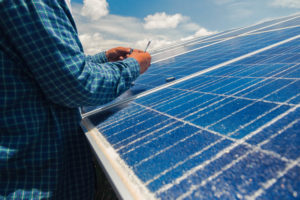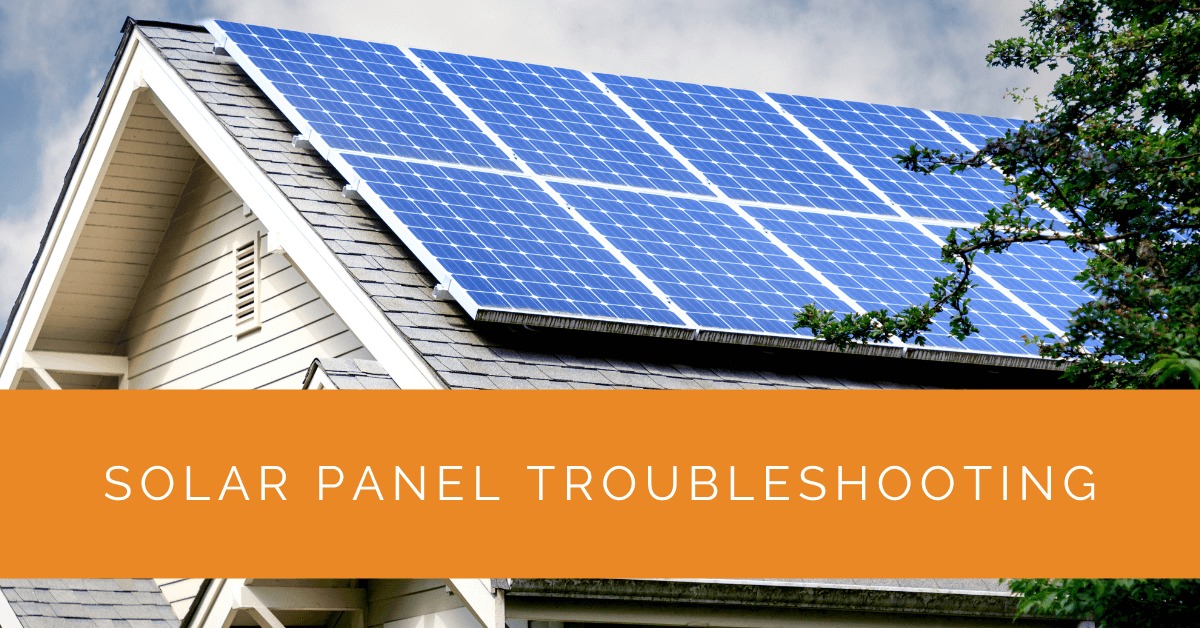Solar panel systems are an excellent investment in renewable energy. However, like any technology, they can encounter issues that affect their performance. In this article, we will explore common problems solar panel owners face and provide troubleshooting steps to ensure optimal system performance.
Contents
Common Solar Panel Problems
Solar panel systems are known for their reliability and long lifespan. However, like any complex system, they can encounter issues that affect their performance over time. By understanding and troubleshooting these common problems, you can take proactive measures to resolve them and ensure the optimal functioning of your solar panel system.
Low Voltage Issues
Low voltage is a prevalent problem that can arise in solar panel systems. It occurs when the panels are not generating the expected amount of electricity due to various factors. Some common causes of low voltage include:
- Shading: When solar panels are partially shaded, the affected cells produce less power, reducing the overall voltage output of the system. Shading can be caused by nearby trees, buildings, or other objects obstructing sunlight.
- Faulty Wiring: Loose or damaged wiring connections can disrupt the flow of electricity, leading to a decrease in voltage. Wiring issues can occur due to poor installation, environmental factors, or aging components.
- Defective Solar Panels: Occasionally, solar panels may have manufacturing defects or suffer damage that affects their performance. Defective panels may produce less power, resulting in low voltage output.
Troubleshooting Low Voltage Issues
To troubleshoot low voltage problems, a systematic approach is essential. Here are some steps you can take:
- Shading Analysis: Conduct a shading analysis to identify any objects or structures that cast shadows on the solar panels. This analysis helps determine the extent of shading and the potential impact on voltage output. Minimizing or eliminating shading through tree trimming or repositioning panels can significantly improve system performance.
- Wiring Inspection: Inspect the wiring connections of your solar panel system. Check for loose or damaged wires and ensure they are securely connected. Loose connections can impede the flow of electricity and contribute to low voltage issues. If any issues are detected, tighten the connections or replace damaged wires.
- Professional Assessment: If the low voltage issue persists and other potential causes have been ruled out, it may be necessary to contact a professional solar technician to inspect the solar panels. An experienced technician can assess the condition of the panels, identify any faults, and recommend appropriate measures to resolve the issue.

Inverter Problems
The solar inverter is a critical component of a solar panel system. It converts the direct current (DC) electricity generated by the solar panels into alternating current (AC) electricity that can be used to power electrical devices in your home or business. Inverter problems can significantly impact the overall performance of the system. Some common inverter issues include:
- Faults: Inverters can experience faults due to electrical surges, component failures, or internal errors. These faults can disrupt the conversion process and result in reduced energy production.
- Tripping Breakers: In some cases, the inverter may exceed the electrical capacity of the connected circuit, causing the circuit breaker to trip. This can happen when the system’s energy production exceeds the capacity of the electrical infrastructure.
- Low Output: Inefficiencies in the inverter or incorrect settings can lead to lower power output. Factors like improper configuration, firmware issues, or compatibility problems can contribute to suboptimal performance.
Troubleshooting Inverter Problems
To troubleshoot inverter problems, you can take the following steps:
- Connection Check: Ensure all connections between the inverter, solar panels, and the electrical grid are secure. Loose connections can cause intermittent operation or reduced efficiency.
- Resetting the Inverter: Many inverters have a reset function that allows you to reboot the system. Refer to the manufacturer’s instructions or user manual for resetting your specific inverter model. A reset can sometimes resolve minor glitches and restore normal operation.
- Professional Assistance: If the problem persists or you suspect a more complex issue, it is advisable to seek professional assistance from a certified solar technician or electrician. These professionals have the expertise and equipment to diagnose and repair inverter problems accurately. They can perform thorough inspections, conduct diagnostic tests, and replace faulty components, ensuring that the inverter operates efficiently and restores the system’s optimal performance.
Wiring and Junction Box Issues
Proper wiring and functioning junction boxes are crucial for your solar panel system’s optimal operation and safety. Wiring problems or faulty junction boxes can lead to reduced performance, system malfunctions, or even safety hazards. Here are some common issues related to wiring and junction boxes:
- Loose Connections: Improperly secured or loose wiring connections can cause voltage drops and system inefficiencies. These loose connections may occur due to vibration, improper installation, or environmental factors. Over time, they can worsen, resulting in more significant performance issues.
- Damaged Cables: Physical damage or exposure to environmental elements such as extreme temperatures, UV radiation, or moisture can cause cable degradation. Damaged cables can disrupt the flow of electricity and negatively impact system performance. Common causes of cable damage include animal chewing, abrasion, or weather-related wear and tear.
- Faulty Junction Boxes: Junction boxes serve as connection points for multiple solar panels, allowing the consolidation of wiring. Faulty or malfunctioning junction boxes can affect the electrical connections and overall system performance. Issues with junction boxes can include loose terminals, damaged internal components, or compromised weatherproofing.
Troubleshooting Wiring and Junction Box Issues
To troubleshoot wiring and junction box problems, follow these steps:
- Inspect Wiring Connections: Conduct a visual inspection of all wiring connections within your solar panel system. Look for signs of looseness, corrosion, or damage. Ensure all connections are secure and properly tightened. If any issues are detected, tighten the connections or replace damaged cables.
- Junction Box Assessment: Check the condition of the junction boxes, both visually and functionally. Ensure that the terminals are secure and undamaged. Verify the weatherproofing integrity of the junction box, particularly if it is exposed to the elements. If any faults or damage are found, consult a professional electrician or solar technician to assess and repair or replace the faulty junction box.
By addressing these common solar panel problems proactively, you can maintain the performance and efficiency of your solar panel system. Regular system maintenance, periodic inspections, and prompt action in troubleshooting and resolving issues will help you maximize the benefits of your solar investment. Remember, if you encounter complex or persistent problems, it is always recommended to seek professional assistance from qualified solar technicians or electricians to ensure a thorough diagnosis and appropriate solutions.

Preventive Measures and Maintenance
Preventive measures and regular maintenance are essential to minimize solar panel problems and ensure long-term performance. Consider implementing the following practices:
- Regular cleaning: To maximize efficiency, your solar panels are clean from dirt, dust, and debris. Follow manufacturer guidelines for safe cleaning methods.
- Performance monitoring: Monitor your system’s performance regularly using monitoring software or tools provided by your installer. Any significant drop in performance should be investigated promptly.
- Periodic inspections: Conduct visual inspections of your solar system, checking for signs of wear, damage, or abnormal operation. Pay attention to wiring, junction boxes, and other key components.
Expert Insights From Our Solar Panel Installers About Solar Panel Troubleshooting
Identifying shading issues is crucial for maintaining solar panel efficiency. Regularly inspect your panels for any obstructions and take necessary actions, such as trimming nearby trees. This simple step can prevent significant drops in energy production.
Senior Solar Technician
Inverter problems can be tricky but are often solvable with a simple reset or by checking connections. If issues persist, it’s essential to consult a professional to avoid any potential hazards or further damage.
Solar Inverter Specialist
Maintaining clean and secure wiring connections is vital for the safety and performance of your solar system. Regular inspections can help detect loose or corroded connections early, ensuring consistent power output and system longevity.
Solar Installation Expert
Case Study: Effective Troubleshooting to Maximize Solar Panel Performance
Background
A residential solar panel system in Arizona began experiencing reduced energy output, prompting the homeowner to seek assistance from Solar Panels Network USA. The system had been installed three years prior and had performed well until recently.
Project Overview
Step 1: Initial Assessment and Data Collection
The homeowner contacted Solar Panels Network USA for a comprehensive assessment:
- System Inspection: A detailed inspection of the solar panels, inverter, wiring, and junction boxes was conducted.
- Data Collection: Energy production data over the past few months was analyzed to identify patterns and pinpoint potential issues.
Step 2: Identifying the Problems
Shading Analysis:
- Observation: It was found that nearby trees had grown significantly, casting shadows on several panels.
- Action: The homeowner was advised to trim the trees to eliminate shading and maximize sunlight exposure.
Inverter Issues:
- Observation: The inverter showed intermittent faults and lower than expected output.
- Action: The inverter was reset, and firmware was updated. Connections were checked and secured, resolving the issue.
Wiring and Junction Box Assessment:
- Observation: Several wiring connections were found to be loose, and one junction box showed signs of corrosion.
- Action: The wiring connections were tightened, and the corroded junction box was replaced to ensure safe and efficient operation.
Results
The troubleshooting efforts led to significant improvements in system performance:
- Restored Energy Output: Post-troubleshooting, the solar system’s energy output returned to its optimal levels, meeting the homeowner’s energy needs effectively.
- Enhanced System Efficiency: Addressing shading and wiring issues improved overall system efficiency, ensuring maximum energy generation.
- Long-Term Reliability: By resolving inverter faults and securing connections, the system’s reliability and longevity were enhanced.
Summary
This case study demonstrates the importance of regular maintenance and prompt troubleshooting for solar panel systems. By addressing common issues such as shading, inverter problems, and wiring faults, homeowners can ensure their solar systems operate efficiently and reliably. Solar Panels Network USA provided expert guidance and practical solutions, highlighting the value of professional assistance in maintaining solar energy systems.
Regular inspections and proactive troubleshooting can significantly enhance the performance and lifespan of your solar panels, ensuring you get the most out of your investment while contributing to a sustainable future.
Experience Solar Excellence with Us!
Trust in Solar Panels Network USA, where our seasoned experts deliver top-quality solar solutions for homes and businesses nationwide. With a legacy of countless successful installations and a commitment to sustainable energy, we’re your reliable partner in the solar journey. Ready for a brighter, eco-friendly future? Call us now at (855) 427-0058 and harness the power of the sun!
Conclusion
By understanding common solar panel problems and implementing effective troubleshooting techniques, you can ensure optimal performance and maximize the benefits of your solar system. Regular maintenance, preventive measures, and prompt action in addressing issues will help keep your solar panels operating efficiently for years. Remember, if you encounter complex or persistent problems, it’s best to seek professional assistance from qualified solar technicians or electricians.
Investing in solar panels is a significant step towards sustainable energy and reducing your carbon footprint. However, it’s important to be aware of the common problems that can arise and the steps to troubleshoot them. By promptly identifying and resolving issues related to voltage, inverters, wiring, and junction boxes, you can ensure your solar panel system’s optimal performance and longevity. Regular maintenance, monitoring, and seeking professional assistance will help you make the most out of your solar investment, ultimately contributing to a greener and cleaner future.
About the Author
Solar Panels Network USA stands at the forefront of solar energy solutions, driven by a team of seasoned solar engineers and energy consultants. With over decades of experience in delivering high-quality solar installations and maintenance, we are committed to promoting sustainable energy through customer-centric, tailored solutions. Our articles reflect this commitment, crafted collaboratively by experts to provide accurate, up-to-date insights into solar technology, ensuring our readers are well-informed and empowered in their solar energy decisions.

